9 Pachyveria Varieties: Identification and Care Guide
Imagine a plant that looks like it came straight out of a fairy tale. With their pastel hues, powdery coatings, and mesmerizing shapes, Pachyveria succulents are real-life gems that will enchant you. Get ready to fall in love with these irresistible hybrids!
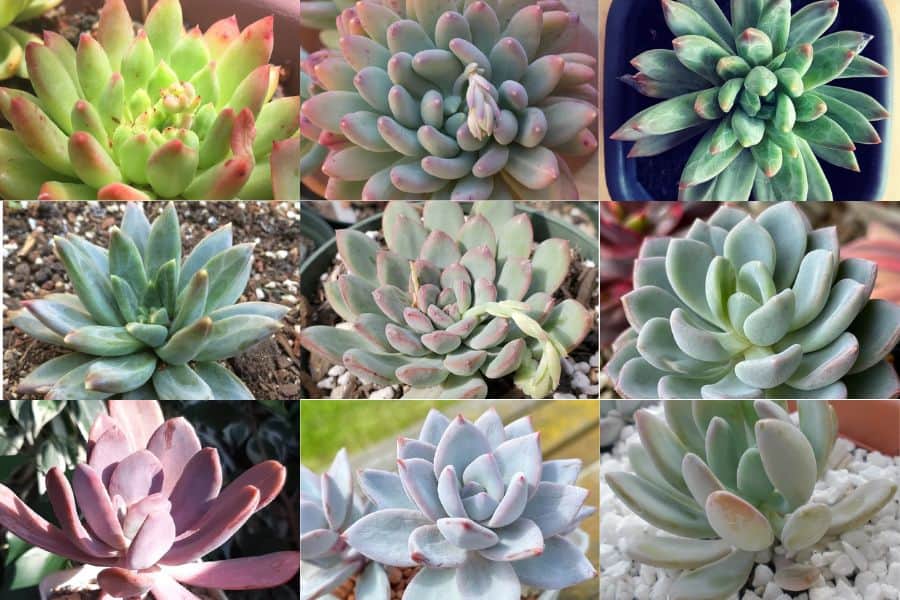
Related Post:
1,000 Types of Succulents With Pictures
Contents
What is a Pachyveria Succulent?
Pachyveria succulents are hybrids created by crossing two succulent genera – Pachyphytum and Echeveria. These unique beauties typically grow between 2-6 inches tall, though some varieties can reach up to 16 inches. They thrive in soil rich in phosphorus and potassium but low in nitrogen.
Prized by collectors and enthusiasts alike, Pachyveria succulents are highly sought after for their captivating appearances. Many cultivated varieties resemble their parent species, but with fascinating twists and ridges that make them truly one-of-a-kind.
These incredible succulents are hardy in USDA zones 9a to 11b, which means they can tolerate temperatures ranging from 20°F (-6.7°C) to 50°F (10°C). So, if you live in an area with mild winters, you can grow Pachyveria outdoors without worrying about frost damage.
9 Captivating Pachyveria Types to Admire
Pachyveria Bea
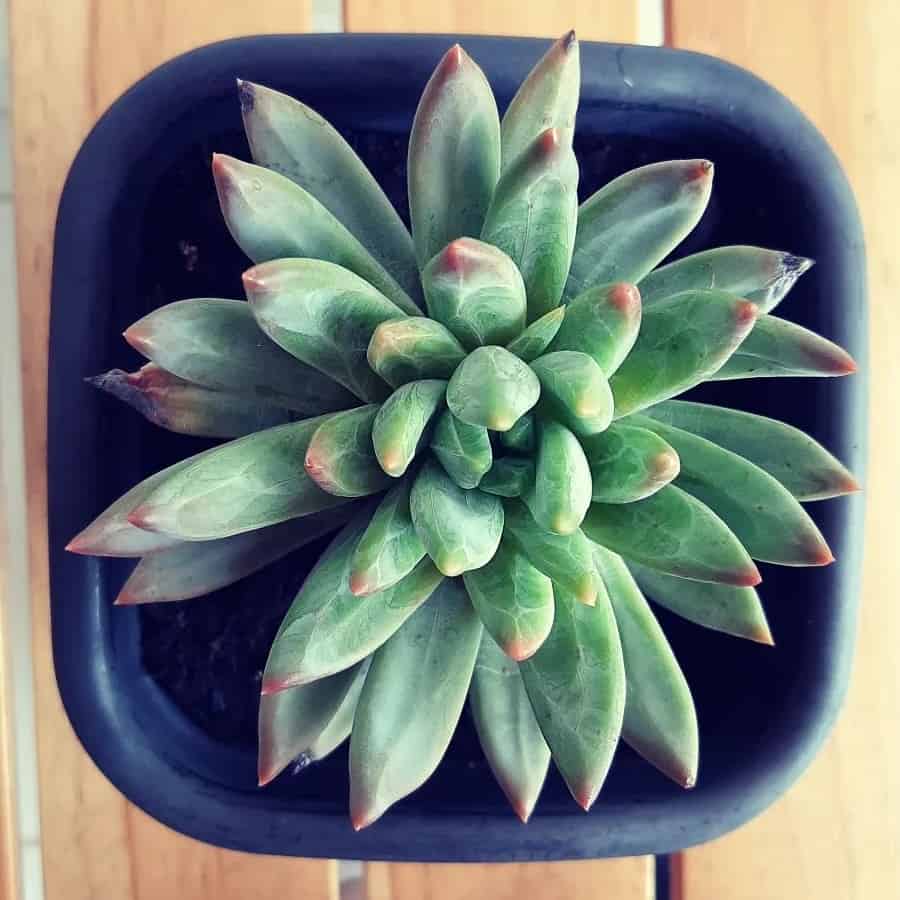
With its frosty, ice-blue rosette and slightly pointed, upright leaves, Pachyveria Bea is a stunner. Its powdery coating and subtle leaf facets make it look like it’s been dusted with snow.
Pachyveria Clavata
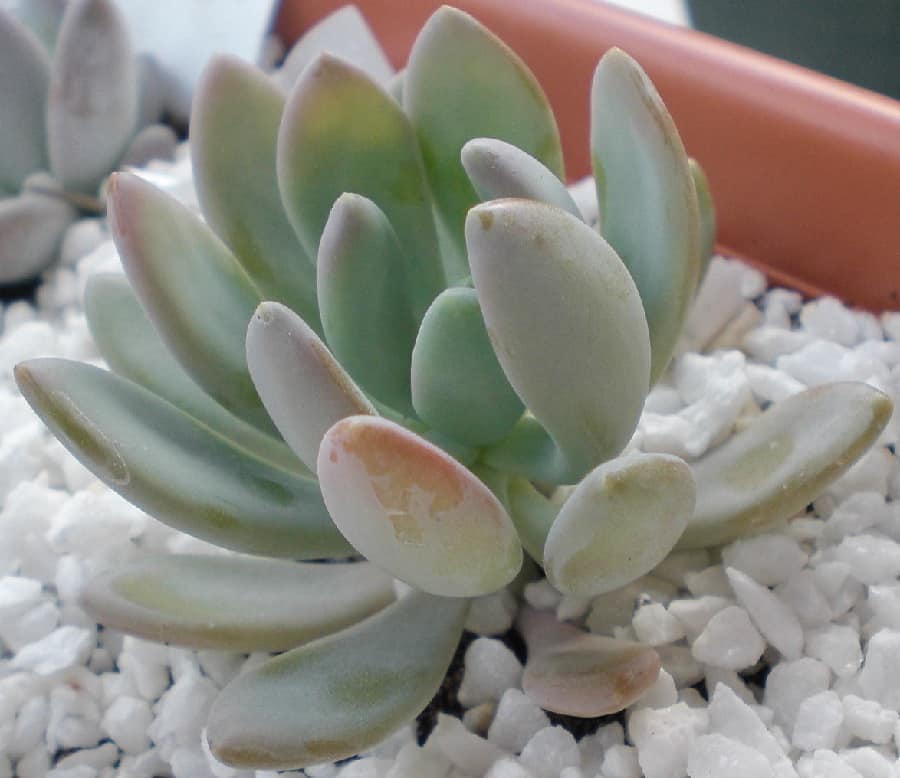
Imagine a succulent that grows up to 16 inches tall, with greyish-green, elongated leaves up to 4 inches long! That’s Pachyveria Clavata for you – a true showstopper with reddish flowers.
Pachyveria Clavifolia
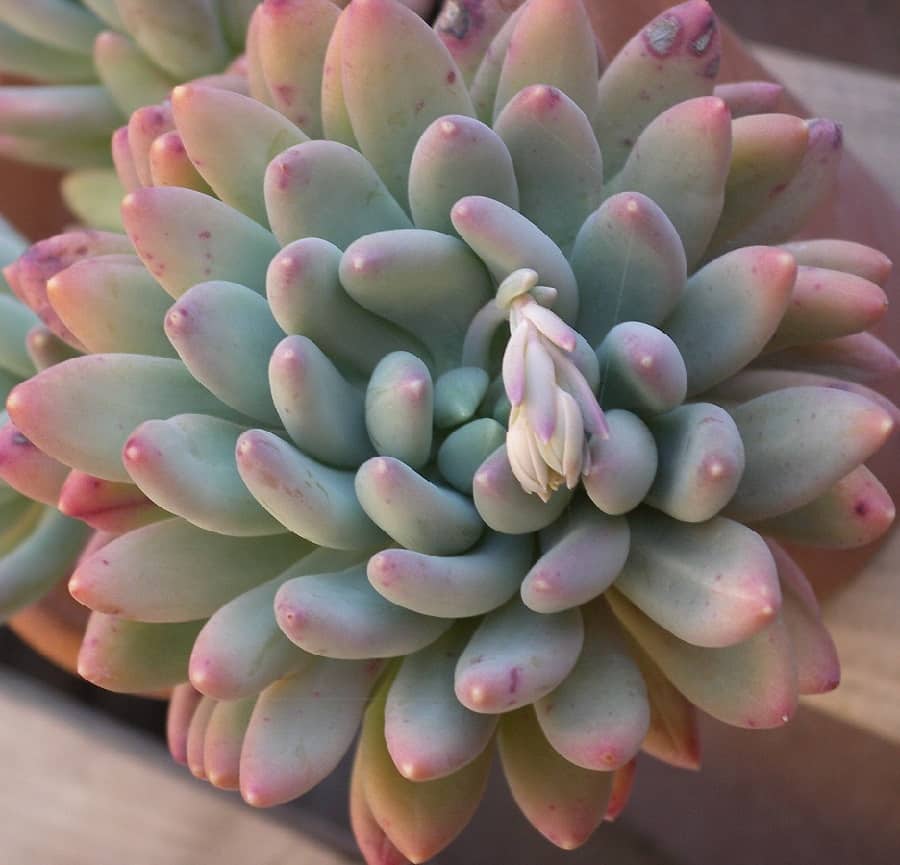
This powder blue rosette with round, fleshy leaves can blush pink at the edges when exposed to bright sunlight. Its soft, pastel colors and compact size (under 6 inches wide) make it a real gem.
Pachyveria Glauca
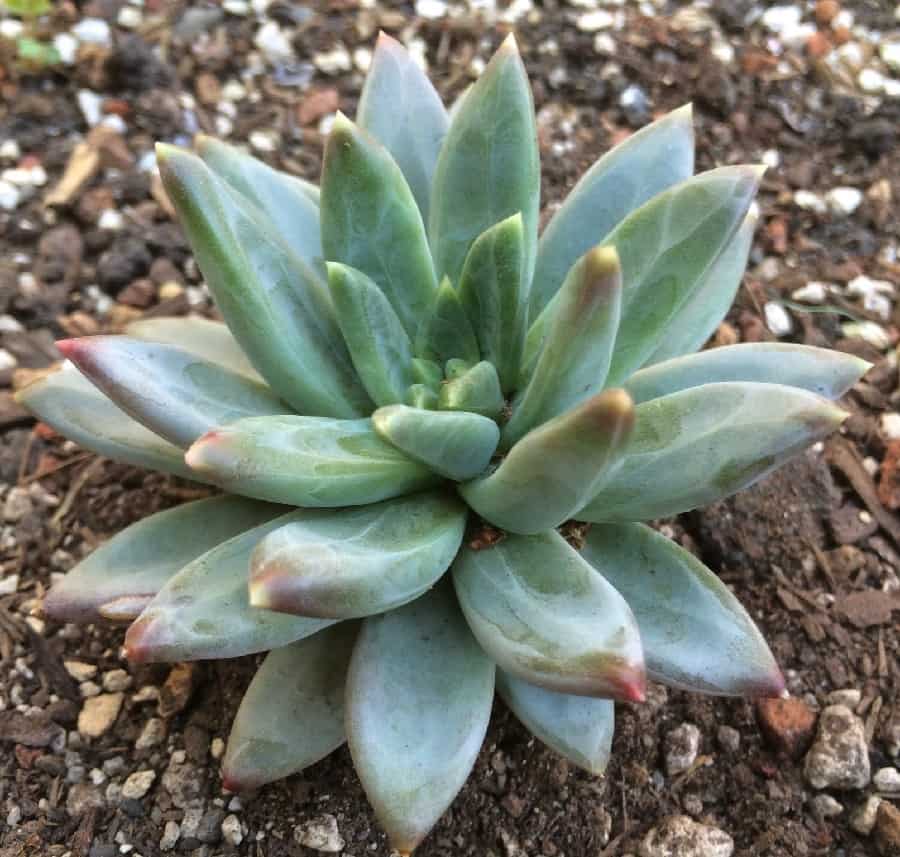
With its thick, silvery blue leaves and a thick coating of protective farina (wax), Pachyveria Glauca is a true stunner. Its chunky leaves stand upright, giving it a unique, loose rosette form.
Pachyveria Jewel Tone
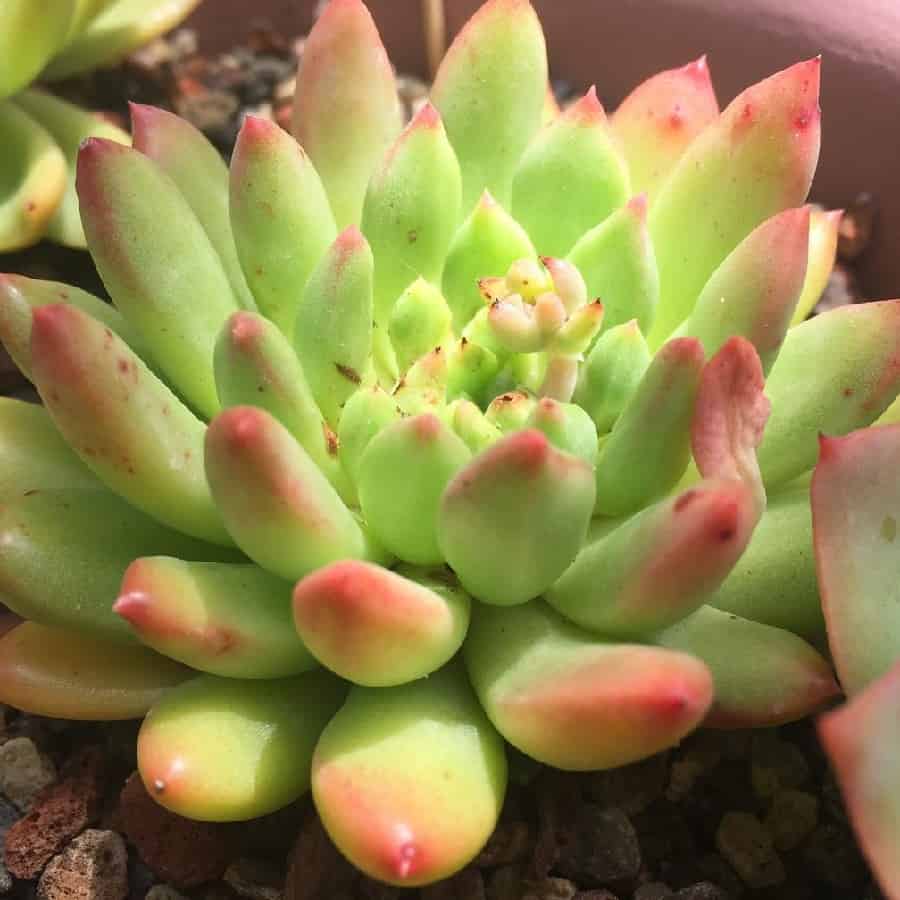
Imagine a mint green rosette that blushes rosy pink at the tips when grown in bright light. That’s Pachyveria Jewel Tone for you – a true jewel with a light farina coating and coral pink, bell-shaped flowers.
Pachyveria King Midas
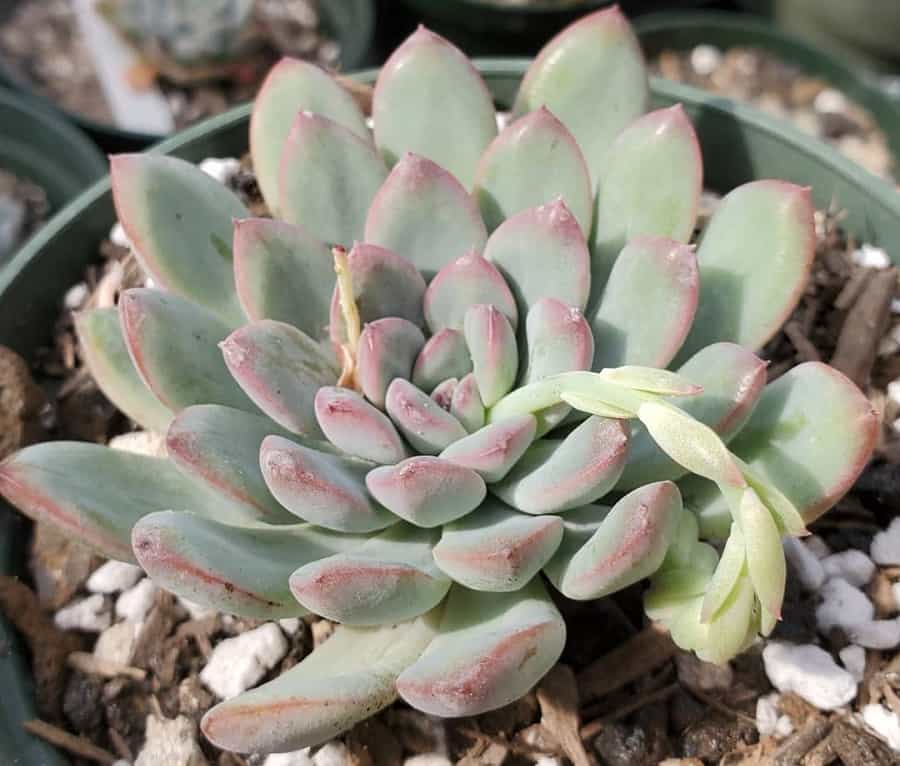
With its low, densely packed blue-green rosette and golden flowers, Pachyveria King Midas is a true treasure. This easy-to-grow cultivar is a hybrid of Moonstones and Echeveria pulidonis.
Pachyveria Myrtilla
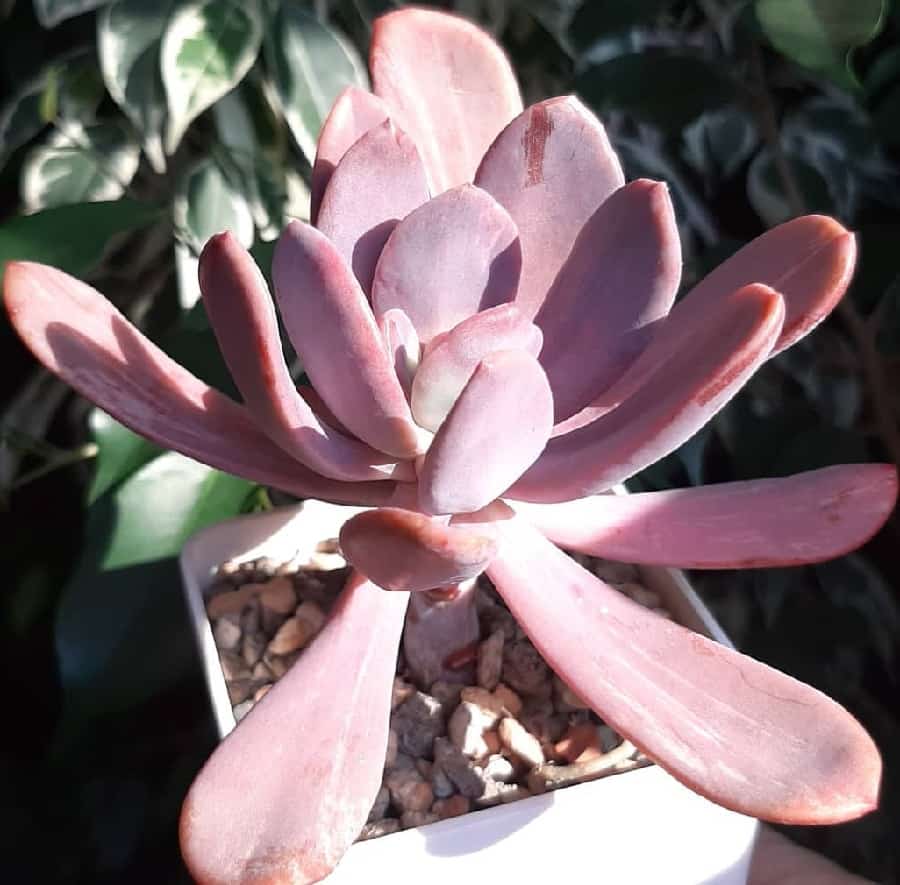
Picture a succulent with rosettes of spoon-shaped, reddish-green leaves covered in a powdery bloom. That’s Pachyveria Myrtilla – a hybrid that can grow up to 10 inches wide and 2 feet tall, with rich pink or mauve leaves in winter.
Pachyveria Powder Puff
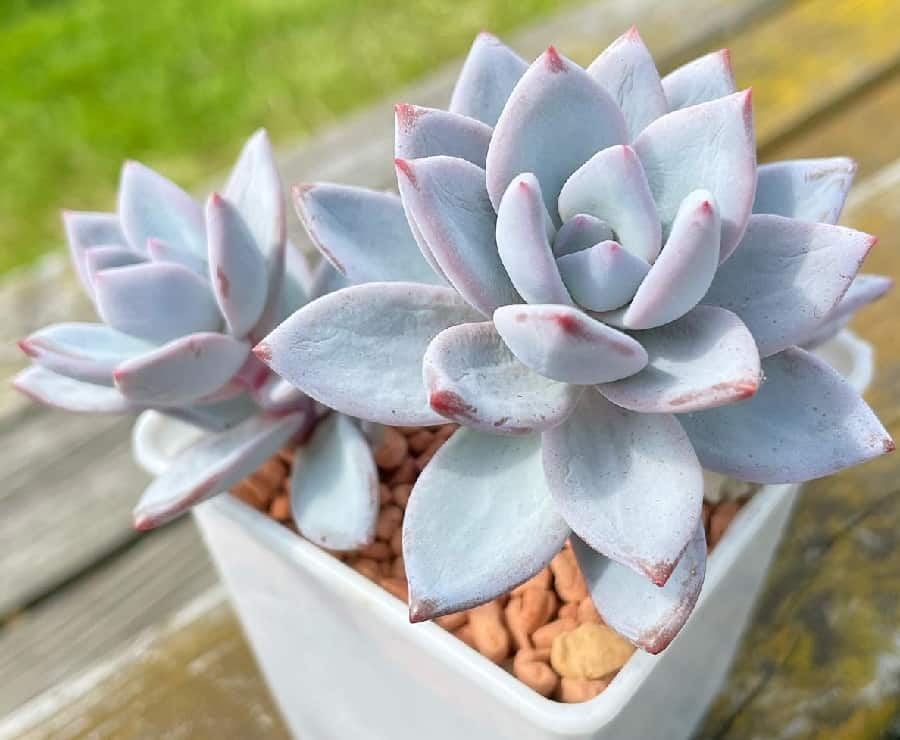
Imagine a pale blue rosette with a rosy pink tinge and a thick, powdery wax coating. That’s Pachyveria Powder Puff, a gorgeous hybrid with sizeable, opalescent leaves and prolific pink and yellow flowers.
Pachyveria Scheideckeri
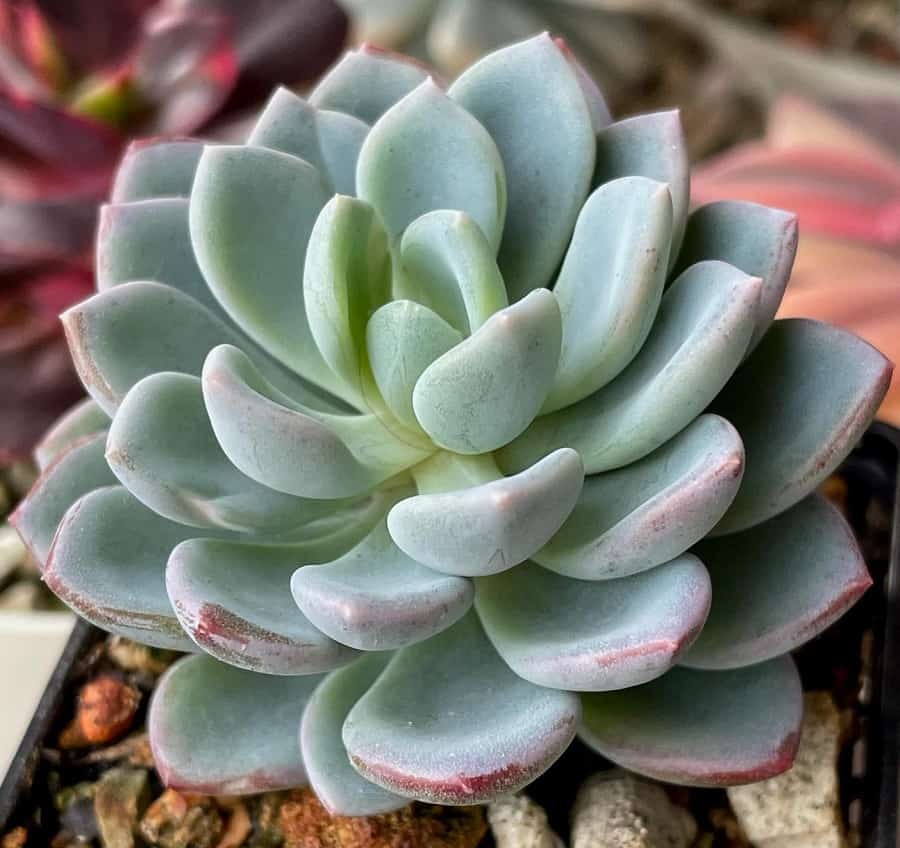
This hybrid forms compact rosettes of fleshy, red-flushed leaves in shades of pale grey, blue-green, or even variegated. Its yellow to orange-red flowers add to its charm.
How To Care For Pachyveria
Pachyveria succulents are relatively easy to care for, making them a fantastic choice for both experienced and beginner gardeners. Here’s what you need to know to keep your Pachyveria thriving:
Light
These beauties are native to sunny regions, so they need plenty of bright light. Outdoors, they can tolerate direct morning sun but should be protected from intense afternoon rays. Indoors, place them near a sunny window or use a grow light.
Water
Like most succulents, Pachyveria are sensitive to overwatering but can handle some underwatering. Only water when the soil is completely dry up to 4 inches deep, and the leaves start to become soft and wrinkled. Avoid getting water on the leaves to prevent rotting.
In summer, water every 5-7 days. During their active growth period in winter, increase watering frequency but be careful not to overdo it.
Soil
Pachyveria need well-draining soil to prevent moisture buildup around the roots. Use a pre-made succulent potting mix or create your own by mixing regular potting soil with sand and perlite or pumice.
Temperature Tolerance
These succulents love heat but can’t tolerate frost. Keep them above 45°F (7°C) and protect them from temperatures below 20°F (-6°C), which can be fatal. Outdoor plants may need covering during winter freezes.
Fertilizer
Feed your Pachyveria once a month during their active growth period with a diluted succulent fertilizer.
Potting and Repotting
Use well-draining pots with drainage holes. Repot every 2 years in April, as their roots grow slower than their leaves.
How To Propagate Pachyveria
Pachyveria are delightfully easy to propagate, allowing you to multiply your collection effortlessly. You can create new plants from either leaf cuttings or stem cuttings.
Leaf Cutting
- Gently twist off a plump, healthy leaf from the mother plant’s rosette.
- Allow the leaf to callous for 1-2 days by leaving it out to dry.
- Fill a well-draining container with a succulent potting mix.
- Optionally, dip the calloused end of the leaf in a rooting hormone powder.
- Plant the leaf vertically in the soil, buried about halfway.
- Mist the soil to lightly moisten it.
- Place in a bright, warm location out of direct sunlight.
- In a few weeks, roots and tiny rosettes will sprout from the leaf.
- Once established, transplant the new rosettes into their own pots.
Stem Cutting
- Use clean scissors to cut off a stem section with 2-3 leaf nodes.
- Allow the cut end to callous over for 1-2 days.
- Optionally, dip the calloused end in a rooting hormone.
- Plant the stem cutting vertically in a well-draining succulent soil.
- Water sparingly until roots have formed, then increase watering.
- Roots and new growth will emerge from the leaf nodes.
- When the new plant is a few inches tall, transplant it.
With both methods, be patient and keep the soil moist but not soaked. In no time, you’ll have plenty of new Pachyveria babies to share or grow into a lush succulent garden!
